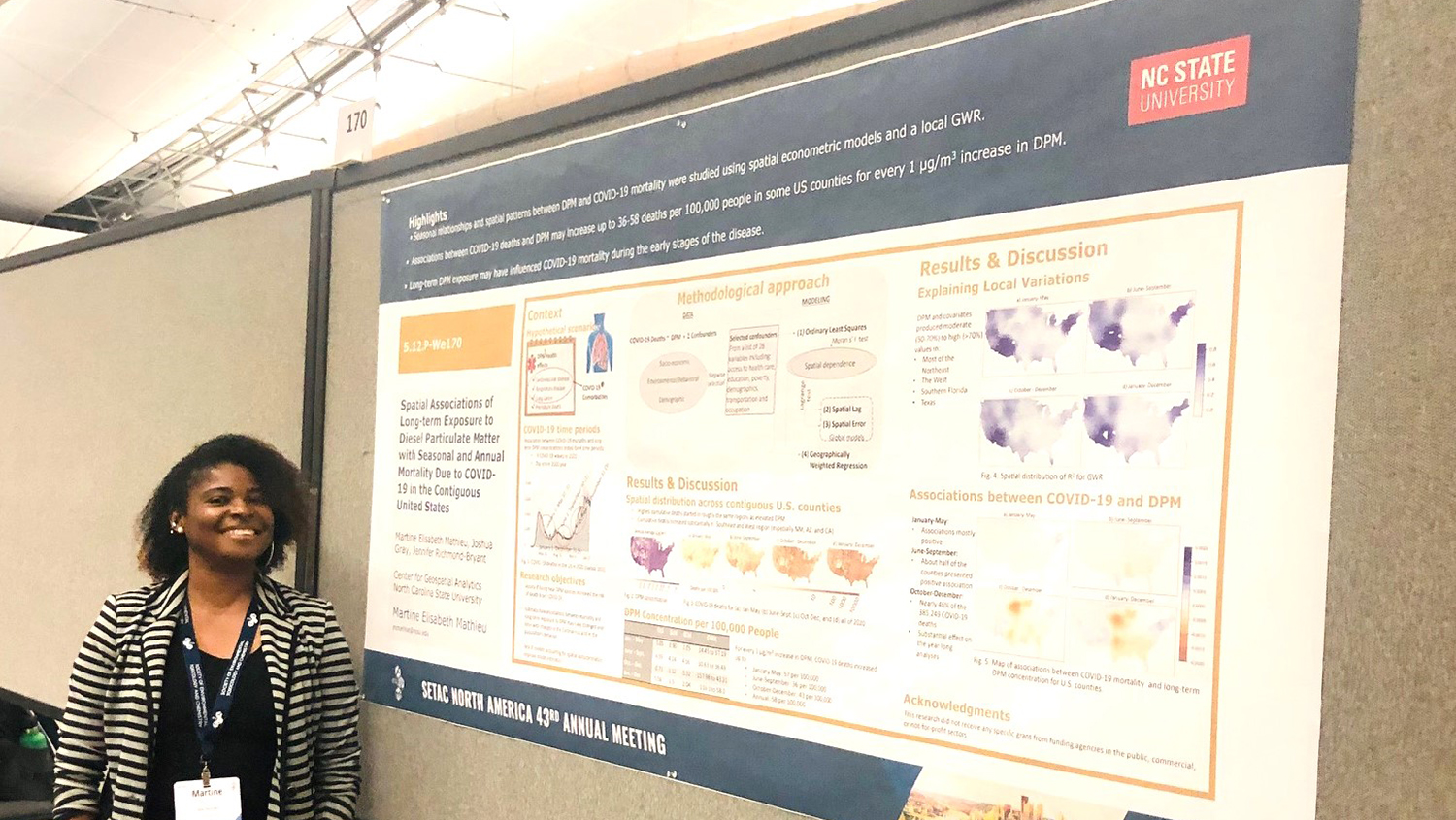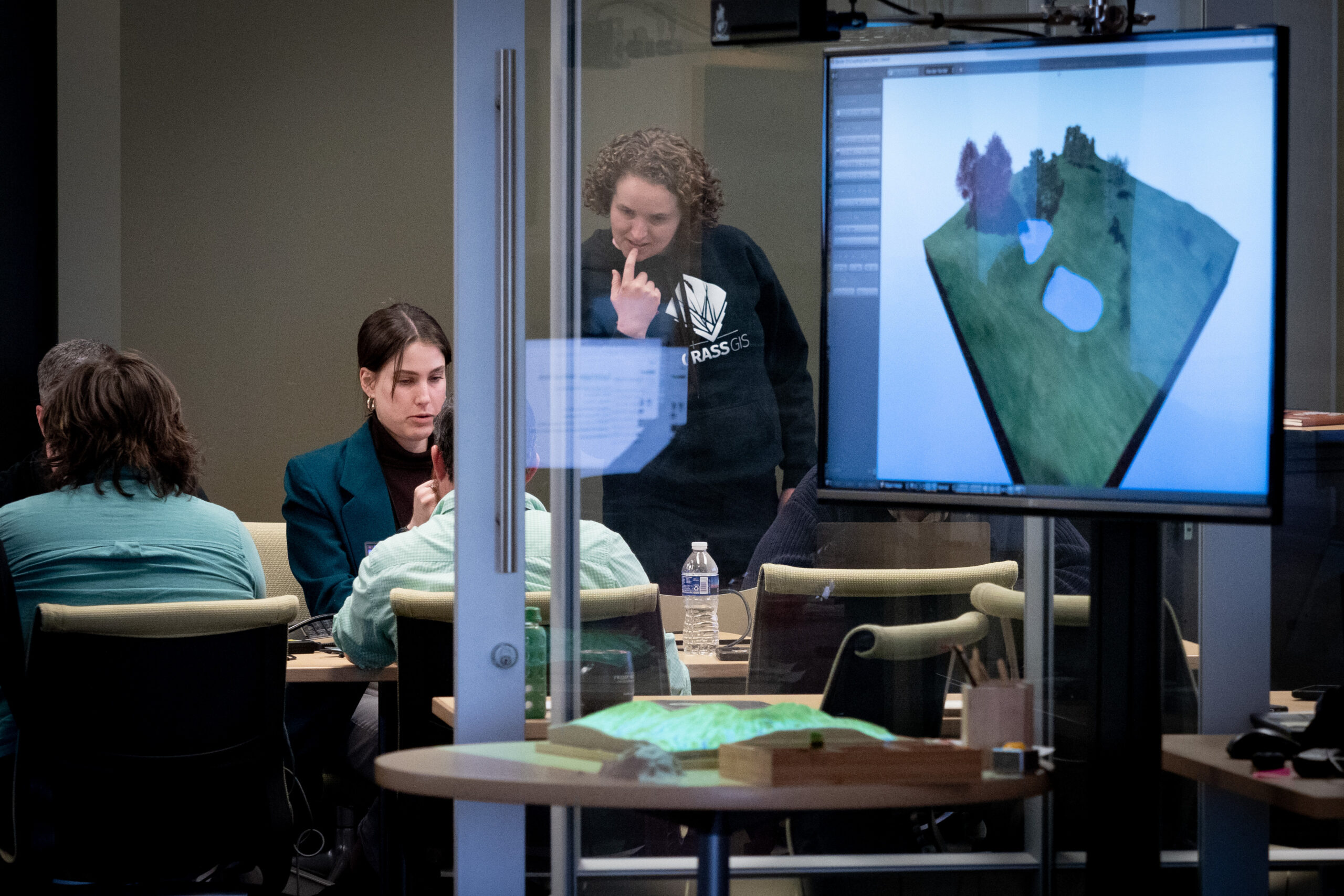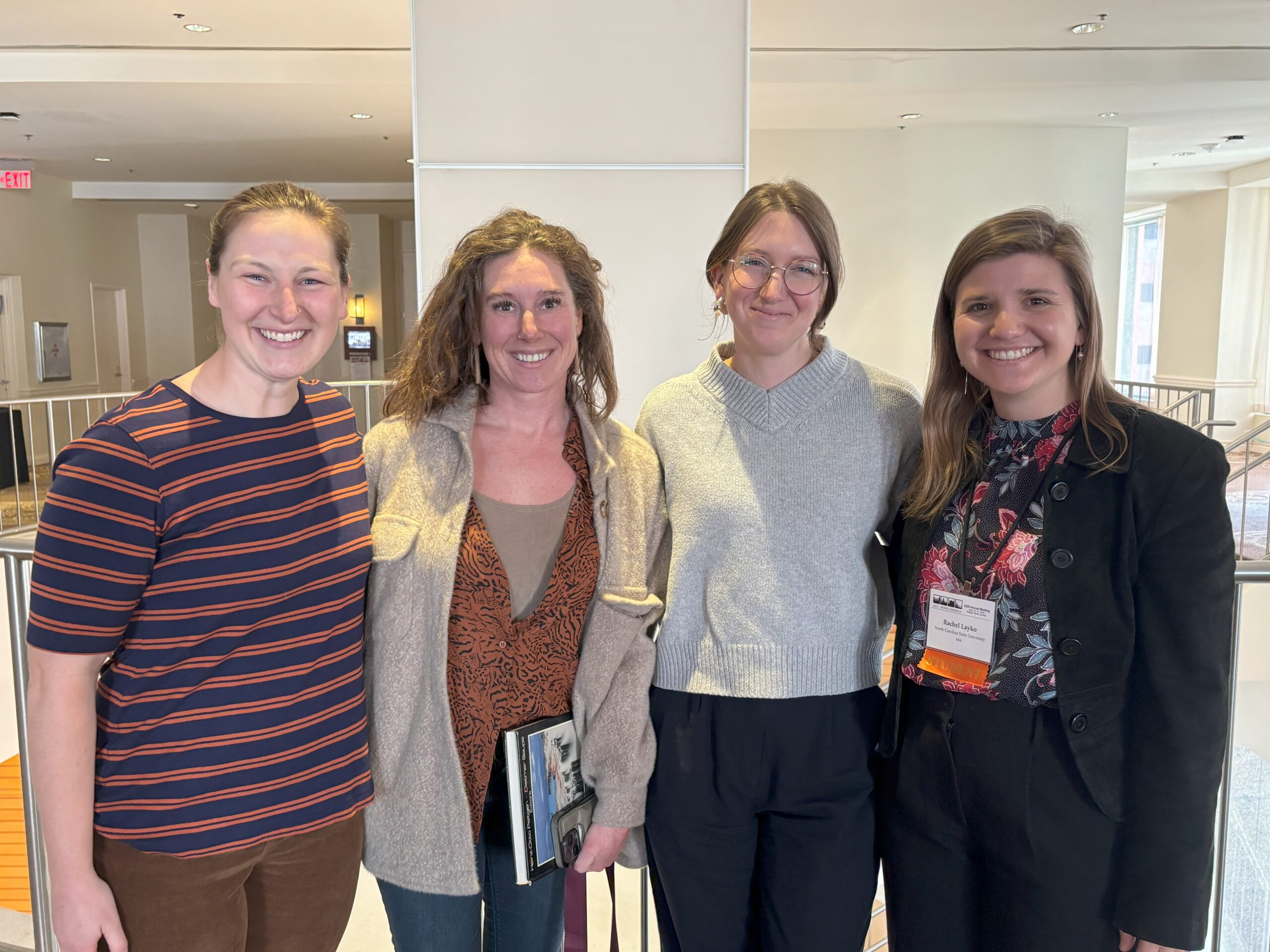Spatial Associations of Long-Term Exposure to Diesel Particulate Matter and COVID-19 Mortality

Editor’s note: Each semester, students in the Geospatial Analytics Ph.D. program can apply for a Geospatial Analytics Travel Award that supports research travel or presentations at conferences. The following is a guest post by travel award winner Martine Mathieu as part of the Student Travel series.
What is it like to be surrounded by hundreds of peers and professors in environmental sciences for five days straight? I was privileged to take part last November (13–17 November 2022) in the 43rd North America conference “Bridging Innovation and Sustainability” organized by the Society of Environmental Toxicology and Chemistry (SETAC), which brought together about 2,000 participants in Pittsburg, Pennsylvania from US, Canadian, European and African universities. SETAC is a worldwide professional organization present in more than 90 countries that promotes research in environmental sciences and its use for policy and decision-making. I learned about SETAC from a professor at the University of Iowa with whom I worked last summer who encouraged me to become a member of SETAC, one of the most important professional organizations in the field of risk and exposure assessment.
My participation in the 43rd meeting was motivated by the great opportunity for me 1) to connect with peers and professors/professionals from different universities and institutions in my geospatial application fields (air pollution exposure assessment, sociotechnical systems); 2) to learn about new computational and statistical methods and tools being developed for environmental assessment that can be useful for my research project; 3) to present my work, receive feedback and develop better presentation and communication skills; and 4) to promote the use of geospatial analytics methods to assess human exposure and risk through community-engaged methods. I’m so grateful for SETAC and the Center for Geospatial Analytics travel awards that allowed me to live this amazing experience.
My poster “Spatial Associations of Long-term Exposure to Diesel Particulate Matter with Seasonal and Annual Mortality Due to COVID-19 in the Contiguous United States” was presented under the session on “Methods and Monitoring Tools for COVID-19 Public Health Research.” This work was a series of spatial analyses I completed in 2021 to explore local associations between COVID-19 mortality rates and exposure to exhaust from diesel engines, using data from the 2018 AirToxScreen database; I then developed this work into a first-author manuscript (accepted by BMC Public Health). I was astonished by people’s interest. I had the opportunity to discuss my paper and received numerous positive comments on the manuscript I presented and great advice for my research project in general. To learn more about innovative analytical approaches for modeling air pollution exposure assessment, I was very interested in scientific sessions on “Chemistry and Exposure Assessment,” which did not disappoint me. I learned a lot about methodologies, techniques and applications of big data that could be applied to my research project.
In addition to the scientific presentation sessions, different “Student and Early Career” activities were planned. My favorite activity was the Student/Mentor dinner where, with four other students, we were given the opportunity to discuss career and professional orientation with a professor, a government official and someone from industry. They were very open to answer any question and provided fascinating insights into career choices and their implications. Also, by serving as a volunteer for side events, I participated in a women discussion on “Gender and Equity Allyship in the Workplace.” That was an interesting conversation that allowed identifying actionable ways to practice gender allyship in communities and workplaces.
- Categories:


